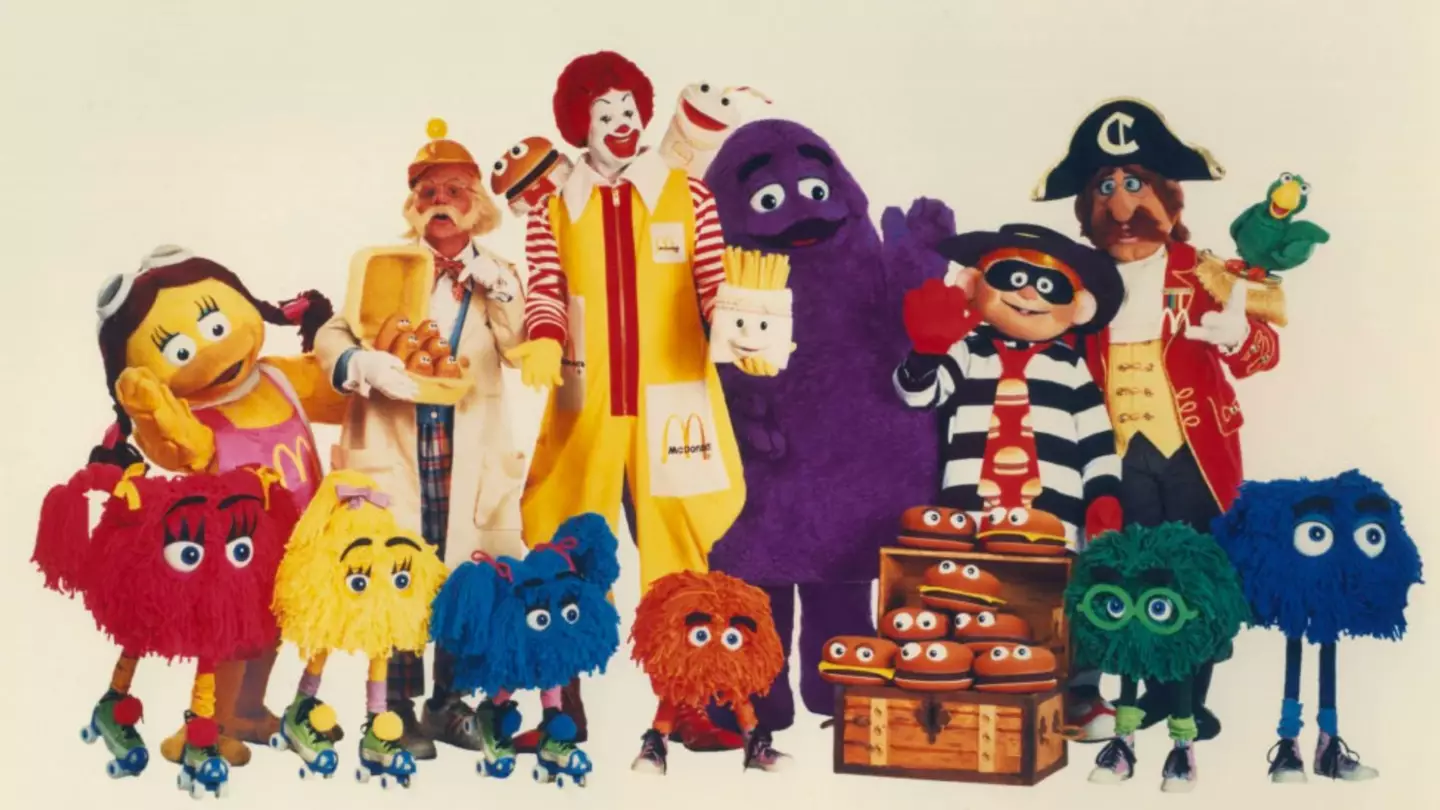Fans of McDonald’s have recently uncovered the truth about one of the fast-food chain’s iconic characters, Grimace. This revelation comes as a surprise to many who were unaware of the origins and significance of the McDonald’s characters.
The McDonald’s story dates back to 1940 when brothers Richard and Maurice McDonald established the chain in San Bernardino, California. Initially conceived as a ‘carhop’ drive-thru, it was designed to provide diners with quick and affordable meals. However, the business took a transformative turn when Ray Kroc, a business tycoon, recognized its potential for expansion into a worldwide franchise.
By the 1960s, McDonald’s was flourishing, and the company decided to introduce family-friendly mascots into its marketing strategy. The first to be introduced was Ronald McDonald, known as the ‘Hamburger-Happy Clown.’ Following Ronald’s success, additional characters such as the Hamburglar, Birdie the Early Bird, the Fry Kids, the McNugget Buddies, the Happy Meal Gang, and Grimace were created.
In 1971, ‘Evil Grimace’ made his debut as part of the McDonaldland crew alongside Mayor McCheese. Recently, fans have been surprised to learn that Grimace is intended to represent a large anthropomorphic taste bud.
This intriguing detail emerged when Brian Bates, a McDonald’s manager in Windsor, Canada, revealed it to CBC News after being honored as Outstanding Manager of the Year. Bates stated, “He is an enormous taste bud, but a taste bud nonetheless.”
With this newfound knowledge of Grimace’s character, curiosity has turned toward the other members of the McDonaldland crew. Over time, McDonald’s built a diverse cast of characters for McDonaldland, prominently featured in their television advertisements. However, this creative venture led to a legal dispute with Sid and Marty Krofft, who claimed that McDonald’s had infringed upon their show, H.R. PufNStuf.
H.R. PufNStuf, a popular sci-fi TV show from the late 60s and early 70s, featured unique creatures exploring themes of good and evil. The show was groundbreaking as one of the first life-sized puppet productions. The Krofft brothers took issue with McDonald’s characters, particularly noting the resemblance between Mayor McCheese and their character, HR Pufnstuf, as well as the similarities between McDonaldland and the Living Island from their show.
The resulting lawsuit ended in favor of the Krofft brothers, who successfully argued that McDonald’s had plagiarized their characters. The advertising agency initially hired by McDonald’s had proposed a campaign inspired by H.R. PufNStuf, but when the collaboration did not materialize, they allegedly proceeded without proper authorization, leading to the copyright infringement case.
Ultimately, the Krofft brothers were awarded $50,000 in damages, and McDonald’s began phasing out its characters. This legal case has since become a point of interest for those learning about the history of McDonald’s marketing strategy.
Online discussions reveal surprise among people who were unaware of the lawsuit’s impact on McDonald’s character lineup. One user on Reddit remarked, “Oh, is THAT why so many of the characters fell out of use? It’s hard to convince anyone who doesn’t remember the early 90s that McDonald’s had this whole shared universe with way more characters than just Ronald and Hamburglar.” Another user commented, “Is this why McDonald’s used to look like a colorful (if slightly deranged) wonderland when I was a kid, but is all soulless and corporate-looking now?”

